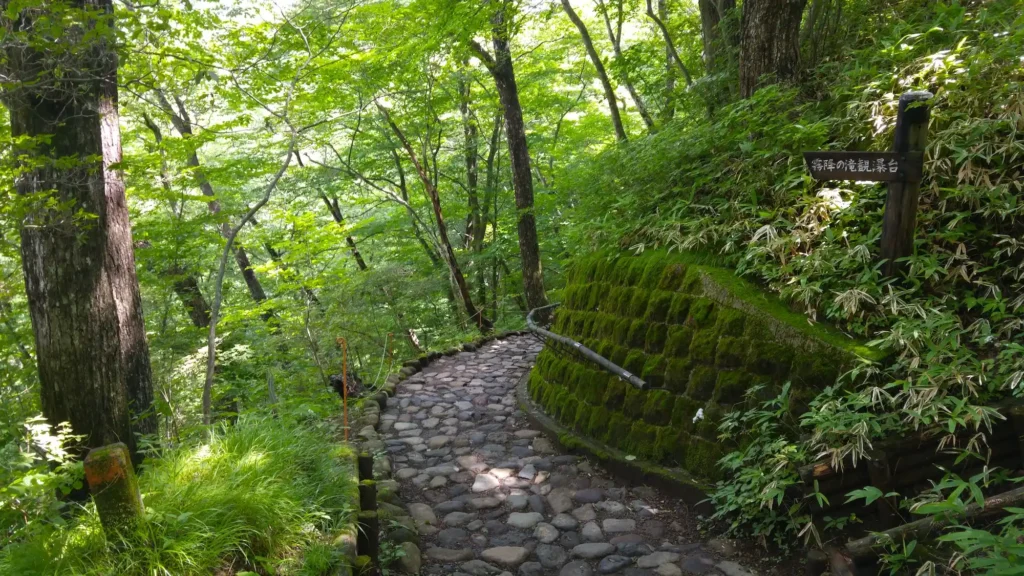
One of the most popular natural destinations accessible from Tokyo is Nikkō, a small town in Tochigi Prefecture that is home to one of Japan’s most unique and best-preserved religious sites in the midst of stunning nature. Nikkō National Park (日光国立公園) covers a large area and there are several hiking trails to enjoy its lakes, forests and waterfalls. Inside the park is the Tōshōgū Shrine (日光東照宮), a place with exquisite architecture and decoration that blends Buddhist and Shinto elements, a characteristic combination of Japanese religious syncretism. Whether you’re spending the day or staying in one of the ryokans in the area, Nikkō is a place not to be missed on your trip to Japan.
How to get to Nikkō from Tokyo
The easiest way to get to Nikkō from Tokyo is by train. If you want to go directly, you can take the Tobu Railway, which will take you to Nikkō station in less than two hours, and costs around €20 (double that if you book a seat). But if you have a JR Rail Pass, the best option is to take a slightly longer route with a transfer, but at no extra cost as these trains are included in the pass. With this second option, you’ll depart from Tokyo or Ueno Station and board a bullet train on the Tōhoku Shinkansen line for Utsunomiya, where you’ll arrive in less than an hour. There you’ll make a short transfer and take a regional train on the JR Nikkō line, which will drop you off at the station in about 45 minutes. As you can see, the time is more or less the same with either option, depending on how convenient it is to go direct or if you prefer to save the cost of the journey if you have the JR Pass.
Asiahop recommends that if you stop in Utsunomiya (on the outward or return trip), don’t hesitate to try the gyozas of this city, considered one of the best in Japan. At the train station itself, you’ll find a number of good places to eat while you wait for your train to Nikkō or Tokyo.
Getting around Nikkō
When you get to Nikkō you can take a 40-minute walk uphill to the nature park, or take the bus from the station, which will drop you at the entrance to the attractions in less than a quarter of an hour. If you’re staying in the area for a few days, it’s worth buying one of the area’s train and bus passes, such as the Nikkō All Area Pass, which costs around €35 and gives you unlimited use of all Nikkō trains and buses for two consecutive days.
Main sites in Nikkō
The Shinkyō Bridge
The bus will make several stops, but if this is your first visit to Nikkō we recommend starting from the famous Shinkyō Bridge (神橋) which is located before the climb up Mount Nantai, one of the sacred mountains of the Nature Park. This bridge marks the entrance to the sacred area of Futarasan, a shrine founded in 767, and is also one of the starting points for the Tōshōgū Shrine. It is undoubtedly one of the most popular images of Nikkō.

Tōshōgū Shrine
After crossing the Shinkyō Bridge, you walk along a cobblestone path lined with huge century-old cypress trees. This pleasant and gentle ascent ends at the large 6-metre-high granite torii that leads to the Tōshōgū Shrine (日光東照宮), built in 1618. Tōshōgū Shrine is one of the most spectacular and ornate religious complexes in Japan. Built in the 17th century, it is dedicated to the shōgun Tokugawa Ieyasu, who was deified as Tōshō Daigongen.
Unlike most Shinto shrines, which tend to be spare and minimalist, Tōshōgū is characterised by exuberant architecture and detailed decoration. The shrine has more than a dozen buildings. One of its highlights is the Yōmeimon, a structure beautifully carved with mythological figures, animals and floral motifs. There is also the famous carving of the Three Wise Monkeys in the stable building (Shinkyūsha), and the Hall of Sacred Dances (Kagura-den). The complex includes a five-storey pagoda, several richly painted storerooms, and the Ieyasu Mausoleum, which is reached by climbing a long flight of steps through the cedar trees.




The natural beauty of Nikkō
If you’re spending several days here, or if you’ve already visited Tōshōgū Shrine, you’ll want to check out some of the region’s great waterfalls, such as Lake Chūzenji (中禅寺湖) and Kegon Waterfall (華厳の滝), two natural paradises. The volcanic lake lies at an altitude of 1,200 metres at the foot of Mount Nantai and offers mountain scenery, boat rides and hiking trails. From it rises the impressive Kegon Waterfall, with a 97-metre drop that plunges down a cliff surrounded by vegetation. Both sites are located in the Okunikko area and are accessible by bus from the centre of Nikkō via the famous Irohazaka Road.

If you enjoy walking in nature, the Kirifuri Trail (霧降滝ハイキングコース) will delight you. The trail that connects the town to Kirifuri Waterfalls is a nature trail that climbs gently through cedar and maple forests, offering panoramic views of the valley. The circular route is about 3 kilometres long and usually takes just over an hour to complete, and is of moderate difficulty.

Do you want to travel to Nikkō Nature Park and enjoy one of the most spectacular natural environments in Japan? Contact us and we will design the perfect experience for an unforgettable trip.